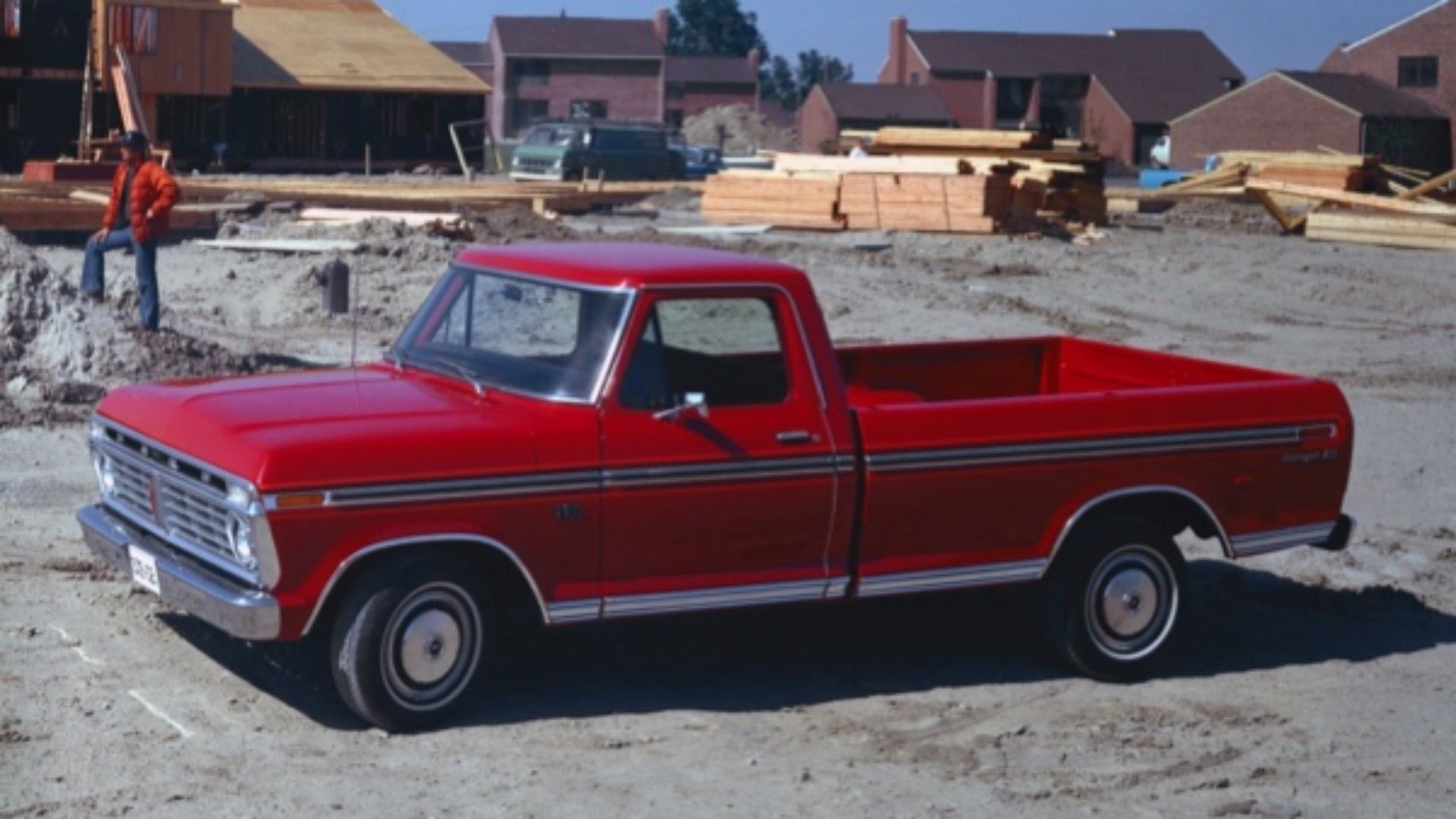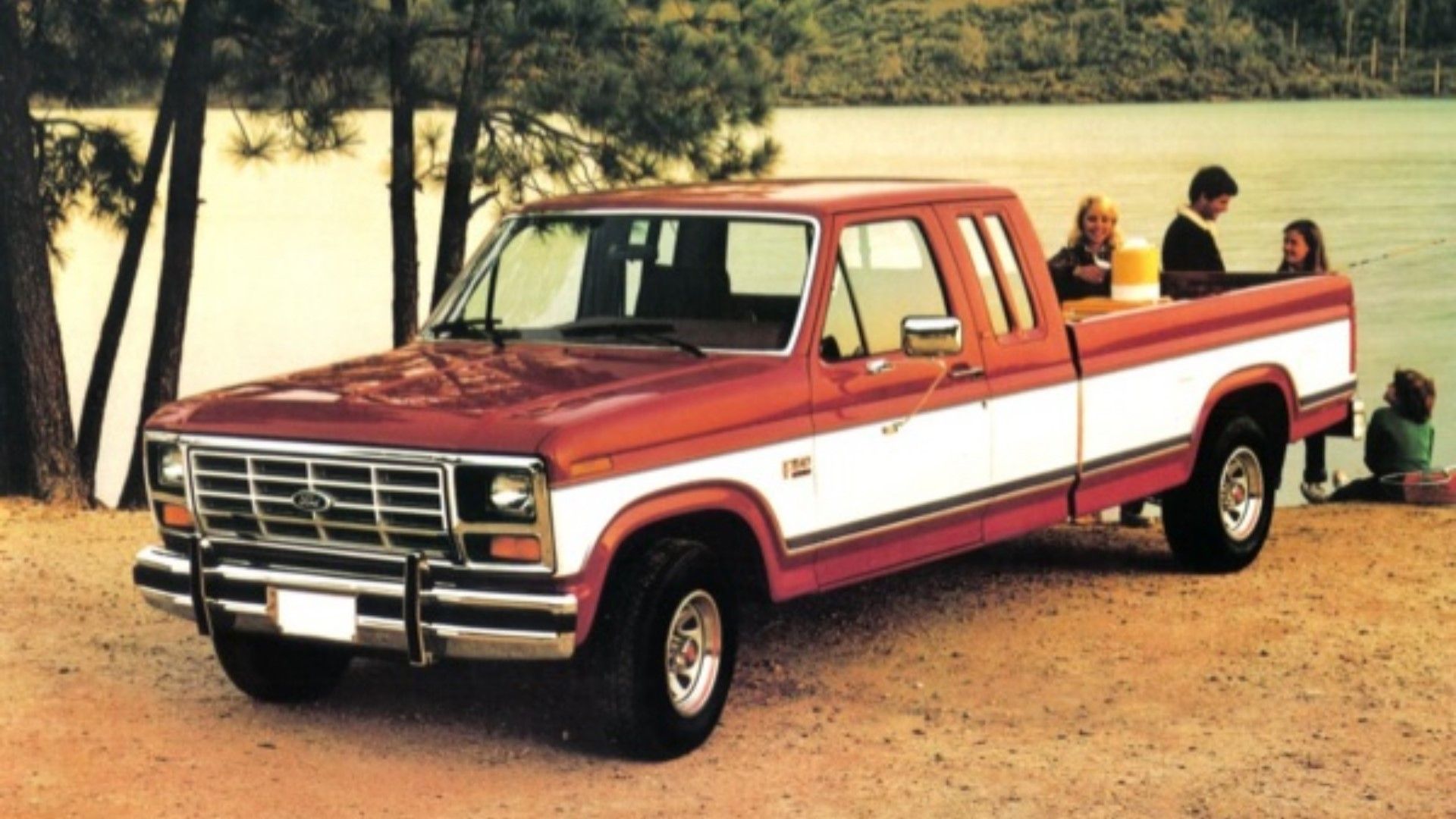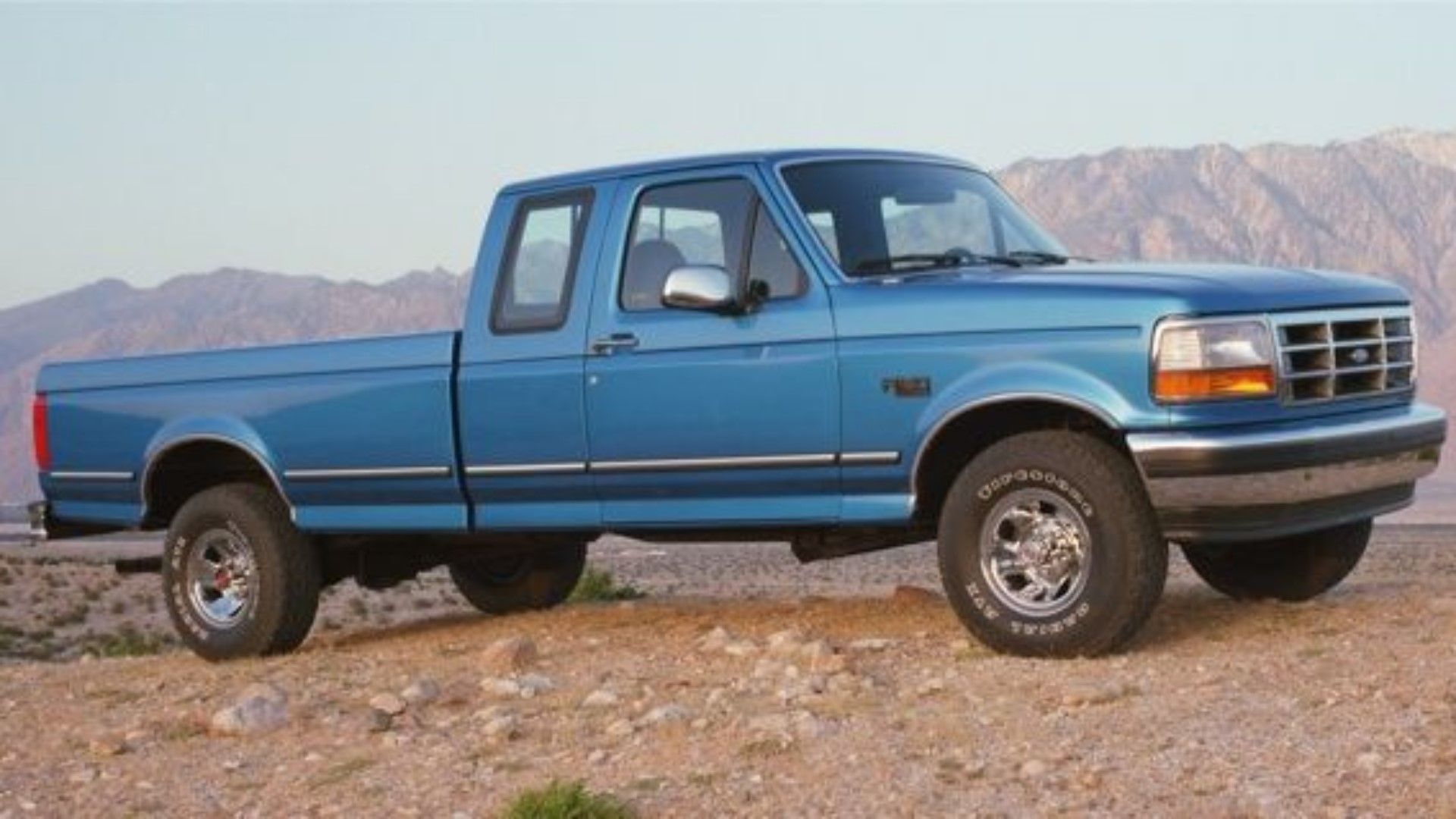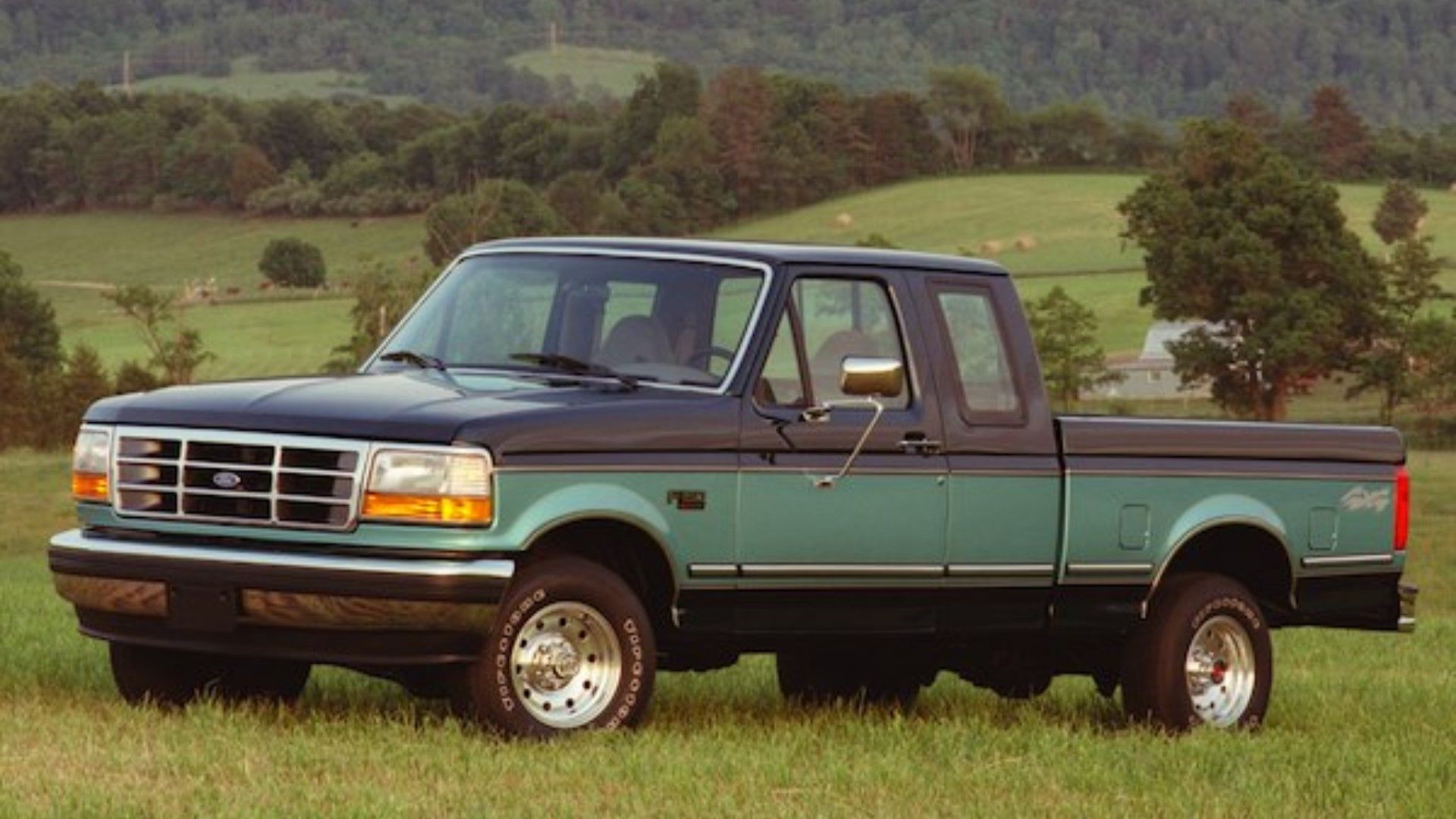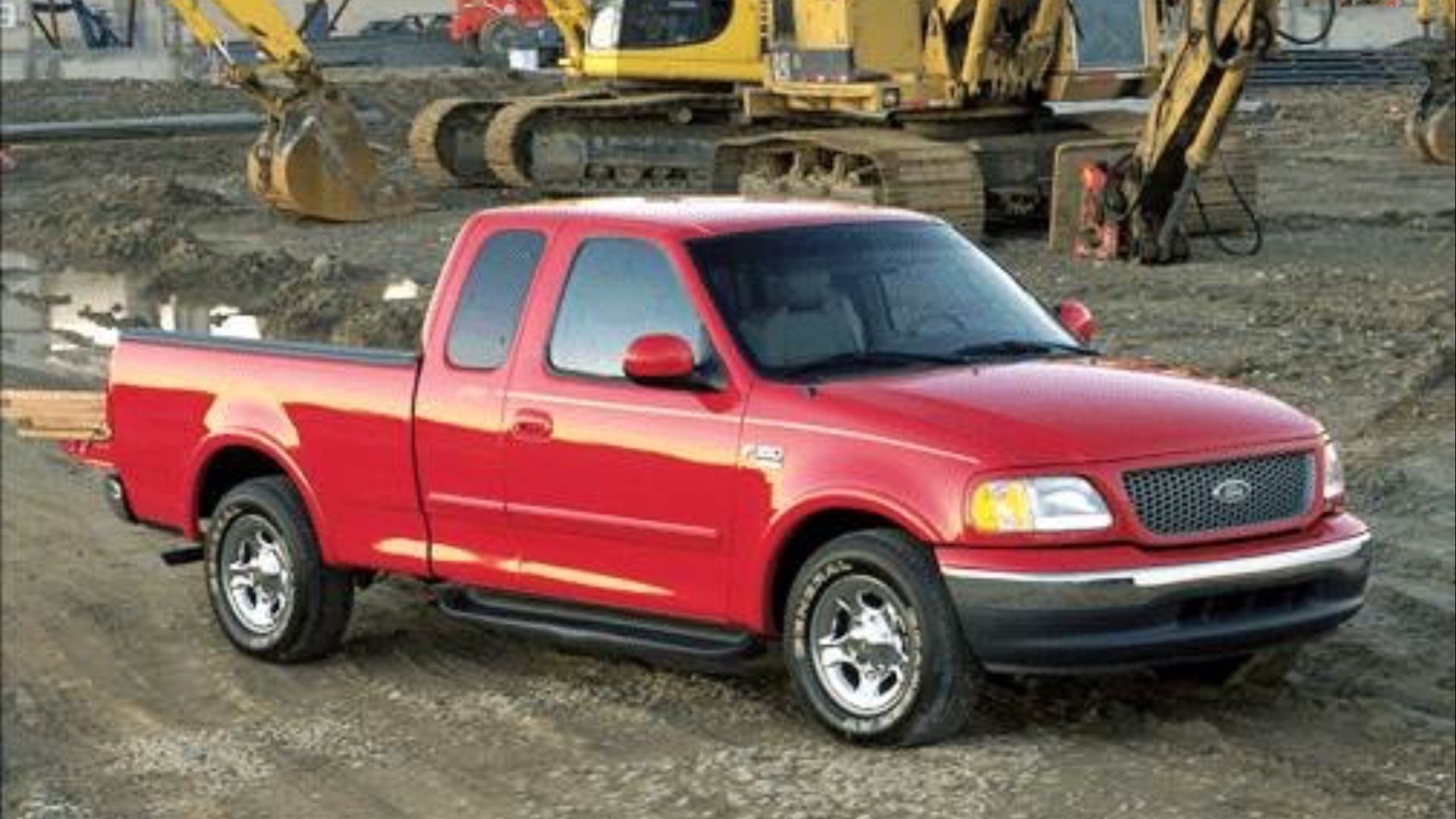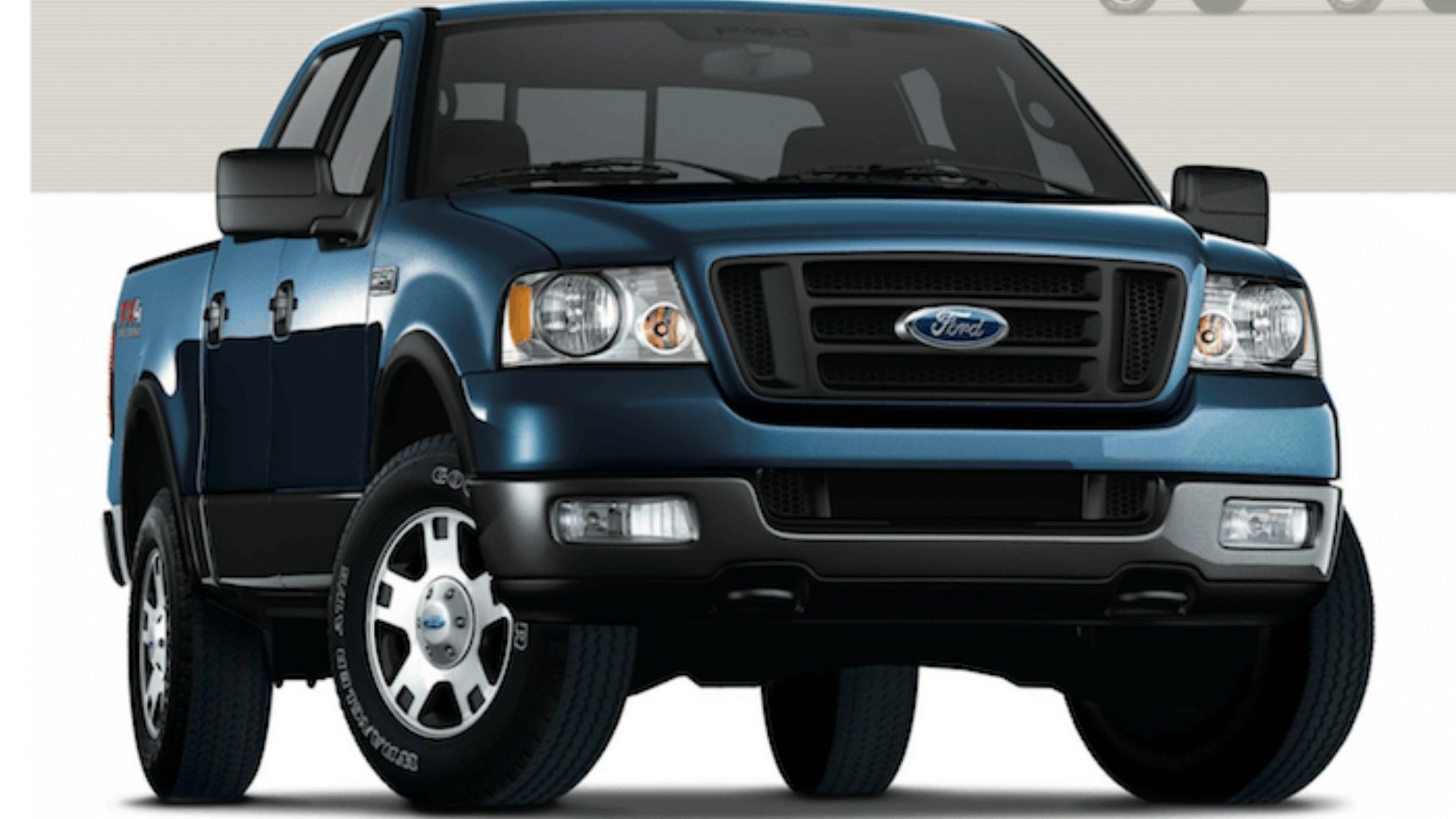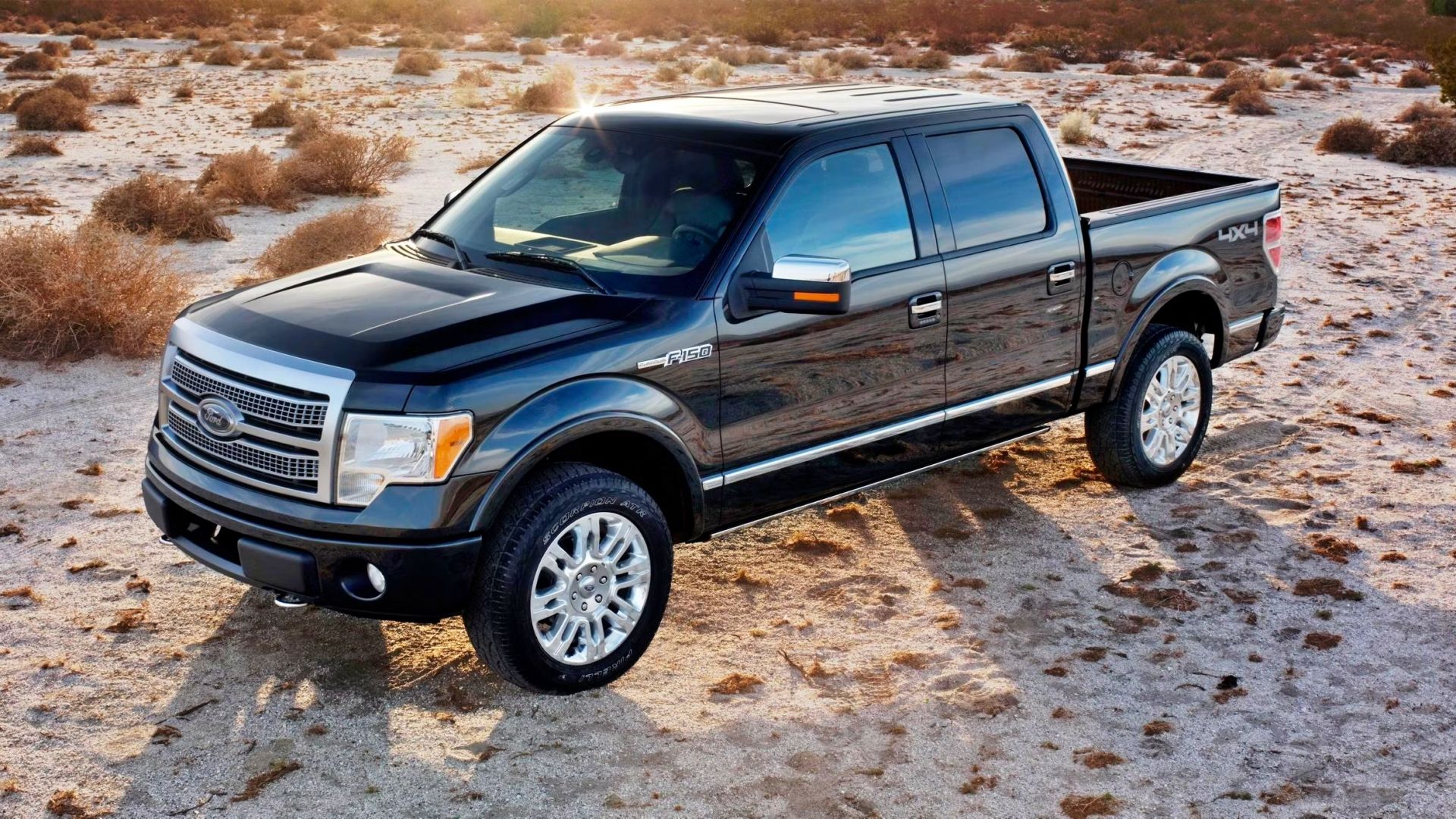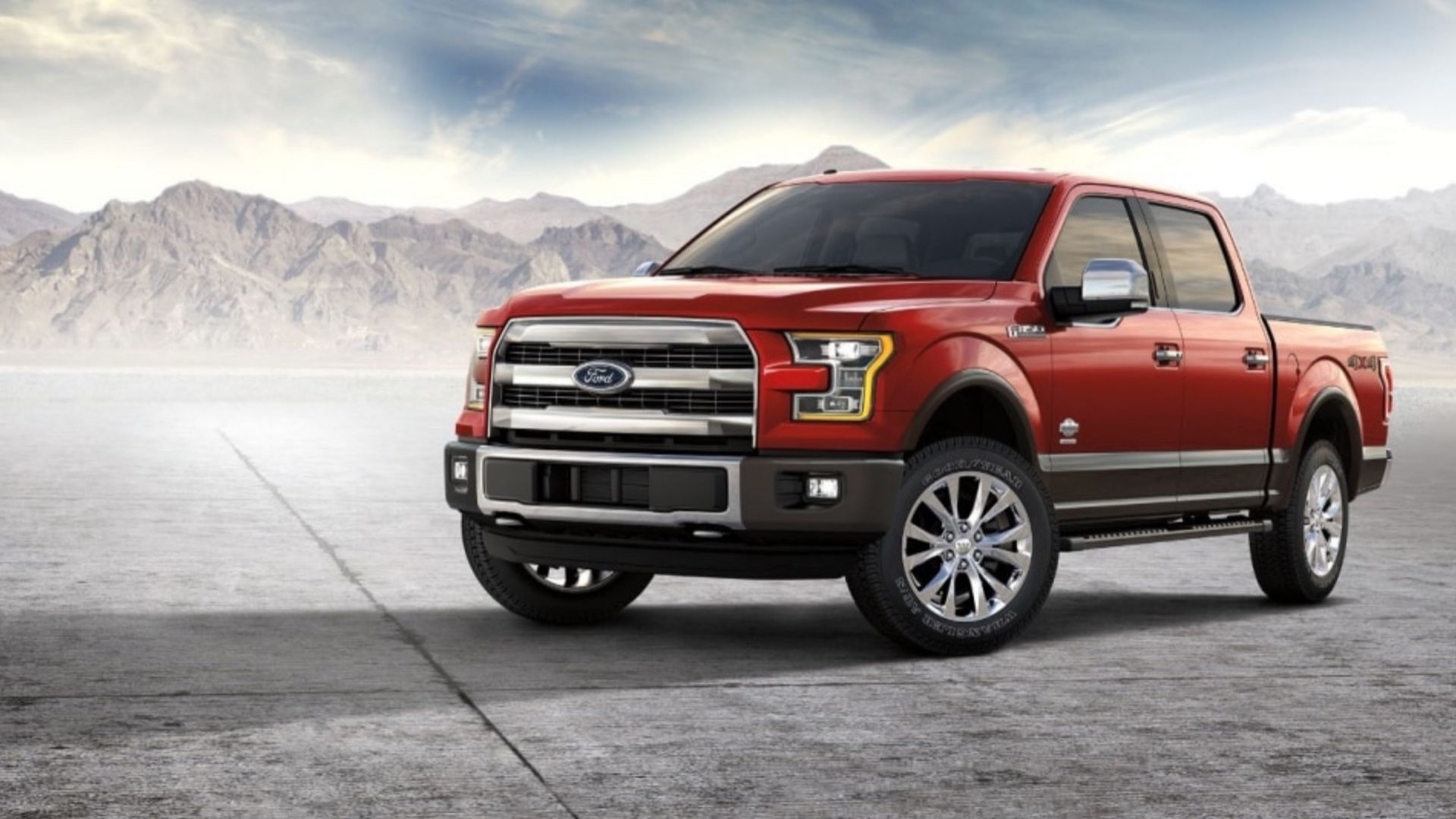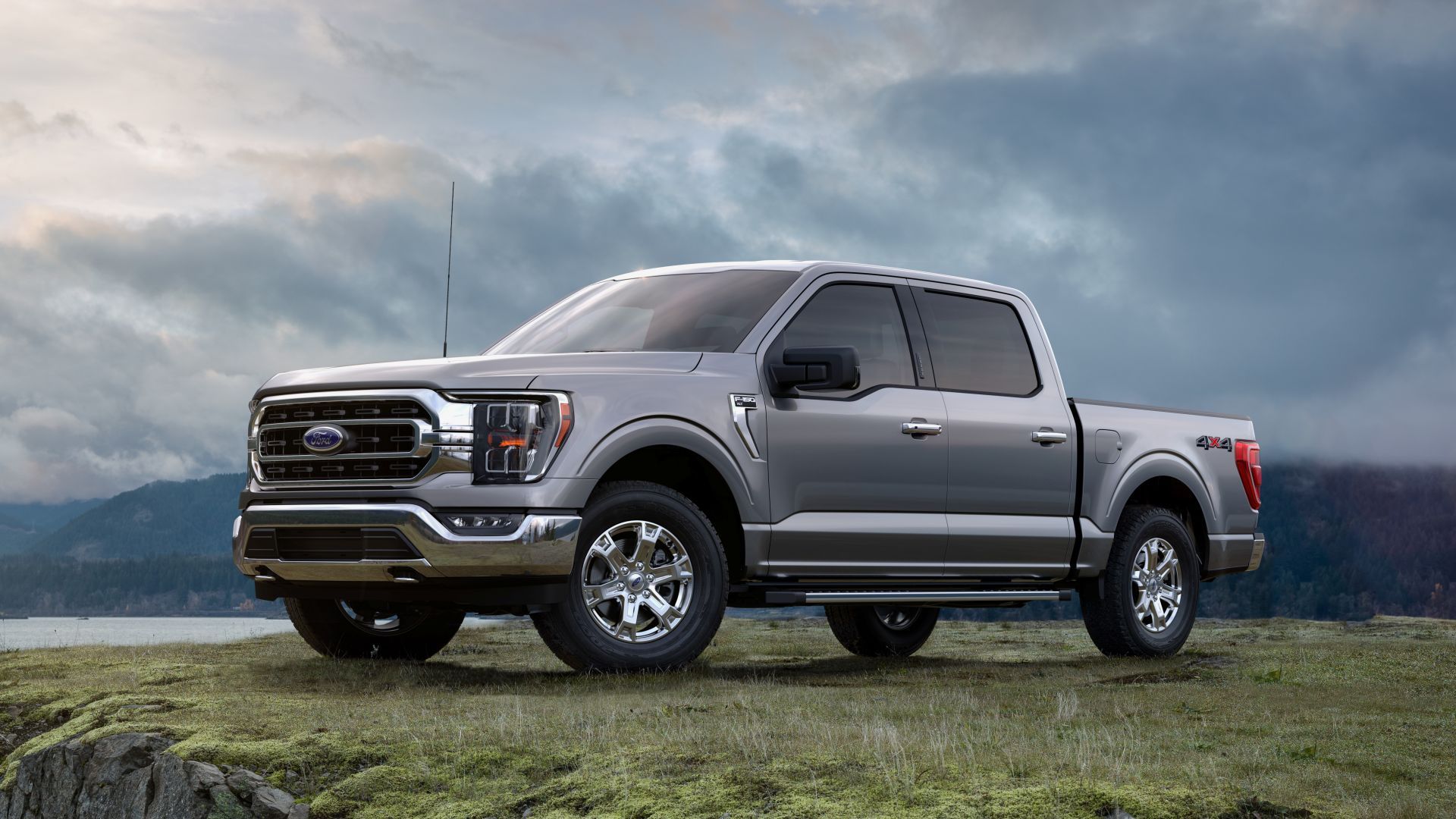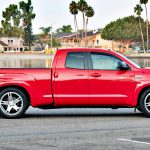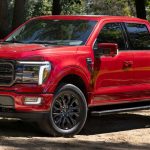Ford is one of the most well-known and storied automotive manufacturers in history. With over a century of automotive advancements and progress under its belt, the Blue Oval’s success transcends time and remains as relevant today as it was 100 years ago. This is thanks to generations of solid build quality and valuable experience in nearly every facet of automotive history.
At the very top of Ford’s “most popular models” list is the highly venerated F-150 pickup. First introduced in 1975, the F-150 quickly became the pinnacle of hard-working vehicles and a staple of American culture with many iconic generations. Now in its ninth generation, we take a look back at every generation, their overall reliability, and their current market price range.
Before we start, it is important to note that, when considering purchasing any generation Ford F-150, it’s recommended to thoroughly inspect the vehicle, ideally with the assistance of a qualified mechanic, to evaluate its overall condition and identify any potential issues. Researching the specific model year and engine option you are interested in can provide insights into common problems or areas to pay attention to during the inspection. Let’s dive in!
In order to give you the most up-to-date and accurate information possible, the data used to compile this article was sourced from various manufacturer websites and other authoritative sources, including Hemmings, JD Power, KBB, Blueovaltech.com, Auto-data.net, CLASSIC.com, Consumerreports.org, and Ford.
9 First Generation
Maximum Power: 245 Horsepower
The first-generation Ford F-150, produced from 1975 to 1979, is generally considered to be reliable and durable, as these trucks were built with robust construction and were known for their strong chassis and drivetrain components. However, it’s important to note that, since these trucks are quite old, their reliability can vary based on maintenance history and overall condition.
The price range for the first-generation F-150 varies depending on the condition, powertrain options, and specific model year, as some years are more sought-after than others. However, you can find used first-generation F-150s starting from around $5,000 to $15,000, depending on factors such as mileage, condition, and location.
Top Rated Engine Specifications
|
Manufacturer |
Ford |
|---|---|
|
Production Years |
1975 – 1976 |
|
Configuration |
V-8 |
|
Displacement |
7.5-L |
|
Power |
245 Horsepower |
|
Torque |
N/A |
|
Transmission |
3-Speed Manual or 3-Speed SelectShift Automatic |
|
Driveline |
Rear-Wheel Drive |
|
0-60 MPH |
10 – 11 Seconds |
|
Top Speed |
95 – 110 MPH |
|
Towing Capacity |
6,050 Pounds |
|
Payload Capacity |
2,020 Pounds |
(Source: Ford)
Pros
- Simple mechanics
- Durable composition
- Powerful attributes
Cons
- Old components may be faulty
- Dated systems
- Scarce original parts
One of the key factors contributing to the reliability of the first-generation F-150 is its simplicity. These trucks featured straightforward mechanical systems without the complexity of modern electronic components. This simplicity made them easier to maintain and repair, and many of their components were built with durability in mind. Additionally, the engines offered in the first-generation F-150, such as the 300 cubic inch inline-six and various V8 options, were known for their hard-working reliability and longevity.
8 Second Generation
Maximum Power: 210 Horsepower
The second generation of the Ford F-150, produced from 1980 to 1986, is generally considered to be a tough workhorse. These trucks were built with strong construction and featured improved fuel efficiency compared to their predecessors. However, as with any used vehicle, the reliability of individual second-generation F-150s can vary based on factors such as maintenance history, overall condition, and how they have been driven over the years. The price range for second-generation F-150s also depends on factors such as condition, mileage, and location. You can find used second-generation F-150s for sale starting from around $4,000 to $20,000 on average.
Top Rated Engine Specifications
|
Manufacturer |
Ford |
|---|---|
|
Production Years |
1984 – 1986 |
|
Configuration |
V-8 |
|
Displacement |
5.8-L |
|
Power |
210 Horsepower |
|
Torque |
305 Pound-Feet |
|
Transmission |
3-Speed Manual or Automatic |
|
Driveline |
RWD or 4×4 |
|
0-60 MPH |
9 – 10 Seconds |
|
Top Speed |
105 – 115 MPH |
|
Towing Capacity |
6,060 Pounds |
|
Payload Capacity |
2,290 Pounds |
(Source: Ford)
Pros
- Solid build quality
- Stout powertrain
- Reliable transmission
Cons
- Old components and dated systems
- Inefficient qualities
One of the key factors contributing to the reliability of the second-generation F-150 is its solid build quality. These trucks were constructed with sturdy frames and drivetrain components, which allowed them to withstand heavy use and demanding conditions. The engines offered during this generation include the returning 300 cubic-inch inline-six, as well as a 5.0-liter and 5.8-liter V-8, both producing over 130 horsepower.
As with the first-gen, the simplicity of the mechanical systems in the second-generation F-150 also contributes to its reliability. With fewer electronic components compared to modern vehicles, these trucks were easier to maintain and repair. This simplicity made it possible for owners to perform routine maintenance and minor repairs themselves, reducing the overall cost of ownership.
7 Third Generation
Maximum Power: 210 Horsepower
The third generation of the Ford F-150, produced from 1987 to 1991, like its predecessors, is generally considered to be reliable and tough. This is a trend that persists through the pre-2000 F-150s, no matter the generation. These trucks were built with improved design and engineering compared to their predecessors, offering enhanced performance and reliability. The price range for third-generation F-150s varies based on factors such as condition, mileage, and specific trim levels, but you can find used third-generation F-150s starting from around $3,000 to $15,000.
Top Rated Engine Specifications
|
Manufacturer |
Ford/Windsor |
|---|---|
|
Production Years |
1988 – 1991 |
|
Configuration |
V-8 |
|
Displacement |
5.8-L |
|
Power |
210 Horsepower |
|
Torque |
305 Pound-Feet |
|
Transmission |
5-Speed Manual |
|
Driveline |
RWD or 4×4 |
|
0-60 MPH |
8 – 9 Seconds |
|
Top Speed |
105 – 115 MPH |
|
Towing Capacity |
6,250 Pounds |
|
Payload Capacity |
2,240 Pounds |
(Source:Ford)
Pros
- Tough construction
- Respectable payload capacity
- 5-Speed manual
Cons
- Sticky Automatic transmission
- Rust-prone suspension
One of the key factors contributing to the reliability of the third-generation F-150 is its improved design and construction. These trucks featured a modernized body and chassis, with improved suspension systems and enhanced drivetrain components. The engines offered during this generation, including the 4.9-liter inline-six and various V8 options, were known for their power and longevity.
The third-generation F-150 also benefited from advancements in technology and engineering, which contributed to its overall reliability. These trucks featured improved fuel injection systems, electronic ignition, and more efficient transmissions, all of which helped enhance performance and reduce the likelihood of mechanical issues.
6 Fourth Generation
Maximum Power: 210 Horsepower
The fourth generation of the Ford F-150, produced from 1992 to 1996, is the model that carried the Blue Oval to the top of the best-selling list. These trucks were built with improved design, enhanced safety features, and upgraded drivetrain components that increased their overall reliability and versatility. The price range for fourth-generation F-150s, like with most used vehicles, depends on factors such as condition, mileage, and specific trim levels. You can find used fourth-generation F-150s for sale starting from around $3,000 to $20,000, approximately.
Top Rated Engine Specifications
|
Manufacturer |
Ford |
|---|---|
|
Production Years |
1991 – 1997 |
|
Configuration |
V-8 |
|
Displacement |
5.8-L |
|
Power |
210 Horsepower |
|
Torque |
305 Pound-Feet |
|
Transmission |
3, 4-Speed Auto or 4, 5-Speed Manual |
|
Diveline |
RWD or 4×4 |
|
0-60 MPH |
9 – 10 Seconds |
|
Top Speed |
110 MPH |
|
Towing Capacity |
6,250 Pounds |
|
Payload Capacity |
1,690 Pounds |
(Source: Ford)
Pros
- More efficiency
- Capable suspension
- Advanced mechanical components
Cons
- Sticky transmission
- Rust-prone oil pan and underbody
One of the key factors contributing to the reliability of the fourth-generation F-150, like its predecessors, is its solid build quality. The engines offered during this generation include the 4.2-liter Essex inline-six and various V8 options, with the most power coming from the 281 horsepower Triton V-8. The fourth-generation F-150 also introduced several technological advancements and safety features, including driver-side airbags, anti-lock brakes, and a diesel powertrain, which contributed to its overall safety, efficiency, and reliability.
5 Fifth Generation
Maximum Power: 340 Horsepower
The fifth generation Ford F-150, which was produced from 1996 to 2004, is often cited as the most reliable F-150 generation available and includes the juicy 1999 F-150 SVT Lightning. It was introduced at the Detroit Auto Show in 1996 with the most drastic refresh in over a decade. The new face came with new engine options, which included the axing of the I-6 and two new V-8 options that produced over 200 horses respectively.
The fifth-gen also featured a lighter chassis, which contributed to the impressive performance. The price range for fifth-generation F-150s varies based on factors such as condition, mileage, and specific trim levels, though you can find used fifth-generation F-150s starting from around $4,000 to $25,000.
Top Rated Engine Specifications
|
Manufacturer |
Ford |
|---|---|
|
Production Years |
1999 – 2004 |
|
Configuration |
V-8 |
|
Displacement |
5.4-L |
|
Power |
260 Horsepower |
|
Torque |
350 Pound-Feet |
|
Transmission |
4-Speed Automatic |
|
Driveline |
RWD or 4×4 |
|
0-60 MPH |
7 – 8 Seconds |
|
Top Speed |
110 – 120 MPH |
|
Towing Capacity |
7,300 Pounds |
|
Payload Capacity |
2,670 Pounds |
(Source: Ford)
Pros
- Lightweight construction
- Increased efficiency
- Impressive towing capacity when fully equipped
Cons
- Rust-prone side rockers and underbody
One of the key factors contributing to the reliability of the fifth-generation F-150 is its modern design and lightweight construction. These trucks featured a modernized body and chassis, with tough suspension systems and enhanced drivetrain components that allowed them to tow up to 11,500 pounds when properly equipped. The fifth-gen F-150 ushered in a new era of non-commercial towing opportunities thanks to bulletproof construction and a hard-working mindset.
4 Sixth Generation
Top Problem: Gas Tank Strap Failure/Engine Issues
The sixth generation of the Ford F-150, produced from 2004 to 2008, is, unfortunately, generally considered to be Ford’s worst generation of F-150s, with the 2004 F-150 in particular being widely regarded as a total lemon. These trucks were, however, built with improved design and more advanced safety features. The price range for sixth-generation F-150s depends on factors such as condition, mileage, and specific trim levels, though you can find used sixth-generation F-150s for sale starting from around $5,000 to $30,000.
Top Rated Engine Specifications
|
Manufacturer |
Ford |
|---|---|
|
Production Years |
2004 – 2008 |
|
Configuration |
V-8 |
|
Displacement |
5.4-L |
|
Power |
300 Horsepower |
|
Torque |
365 Pound-Feet |
|
Transmission |
4-Speed Automatic |
|
Driveline |
RWD or 4×4 |
|
0-60 MPH |
7 – 8 Seconds |
|
Top Speed |
110 – 115 MPH |
|
Towing Capacity |
8,200 Pounds |
|
Payload Capacity |
1,670 Pounds |
(Source: Ford)
Pros
- Powerful engine options
- Improved safety features
- Advanced creature comforts
Cons
- Unreliable powertrain
- Engine components prone to failure
The engines offered during this generation were the 4.2-liter V6, 4.6-liter V8, and 5.4-liter Triton V8 and weren’t often cited for their reliability. Whether that was due to component failure or poor design execution is still debated to this day. As stated before, the sixth-generation F-150 also introduced several advanced creature comforts and safety features, which contributed to its overall safety and popularity among a wider audience. The safety features such as side airbags and stability control became more widely available during this generation, enhancing occupant safety.
3 Seventh Generation
Top Problem: Transmission Failure/Loss of Engine Power
The seventh generation of the Ford F-150, produced from 2009 to 2014, is more akin to a reliable family hauler that works part-time. These trucks were built with a posh design, advanced technology, and luxuries often reserved for the premium SUVs of the time. That said, the seventh-generation F-150s have generally been considered semi-reliable, with strong performance and improved fuel efficiency thanks to the introduction of the EcoBoost powertrain.
However, the engine can lose power and the transmission becomes somewhat hard-shifting as the vehicle’s lifespan progresses. For the buyers out there, it’s important to note that certain engine options, such as the EcoBoost, may have specific reliability concerns, so it’s recommended to research and inquire about the maintenance history of the specific vehicle you are interested in.
Top Rated Engine Specifications
|
Manufacturer |
Ford |
|---|---|
|
Production Years |
2009 – 2014 |
|
Configuration |
V-8 |
|
Displacement |
5.4-L |
|
Power |
320 Horsepower |
|
Torque |
390 Pound-Feet |
|
Transmission |
6-Speed Automatic |
|
Driveline |
RWD or 4×4 |
|
0-60 MPH |
7 – 8 Seconds |
|
Top Speed |
110 – 115 MPH |
|
Towing Capacity |
8,200 Pounds |
|
Payload Capacity |
2,750 Pounds |
(Source: Ford)
Pros
- Sophisticated tech and amenities
- Clean design
- Efficient powertrain
Cons
- Reports of unreliable transmission and engine
- Lackluster performance
One of the key factors contributing to the appeal of the seventh-generation F-150 is its strong frames, improved tech and suspension systems, and advanced drivetrain components. The engines offered during this generation, including the 3.7-liter V6, 5.0-liter V8, and 3.5-liter EcoBoost V6, were known for their fuel efficiency, though many report lackluster performance.
The price range for seventh-generation F-150s varies based on factors such as condition and specific trim levels, considering the Raptor was also introduced during this time, but you can find used seventh-generation F-150s starting from around $8,000 to $40,000.
2 Eighth Generation
Maximum Power: 450 Horsepower
The eighth generation of the Ford F-150, produced from 2015 to 2020, is considered a leap in Ford’s pickup construction thanks to its high-strength military-grade aluminum body additions, which reduced weight and increased fuel economy. The eighth-gen returned with the reliable and powerful Ecoboost options as well as a turbo-diesel option, and utilized Ford’s up-to-date driver-assist features to increase safety.
This particular generation is credited for re-instilling the public’s confidence in the F-150 thanks to its refined engine and design application. The price range for eighth-generation F-150s depends on the usual factors, though you can find used eighth-generation F-150s for sale starting from around $15,000 to $60,000.
Top Rated Engine Specifications
|
Manufacturer |
Ford |
|---|---|
|
Production Years |
2015 – 2020 |
|
Configuration |
V-6 |
|
Displacement |
3.5-L |
|
Power |
450 Horsepower |
|
Torque |
510 Pound-Feet |
|
Transmission |
10 or 6-Speed Automatic |
|
Driveline |
RWD or 4×4 |
|
0-60 MPH |
5 – 6 Seconds |
|
Top Speed |
130 – 140 MPH |
|
Towing Capacity |
11,600 Pounds |
|
Payload Capacity |
3,000 Pounds |
(Source: Ford)
Pros
- Powerful power options
- Superb towing
- Advanced, modern tech and features
Cons
- High-priced premium options
One of the key factors contributing to the reliability of the eighth-generation F-150 is its tough, versatile attributes. These trucks featured high-strength aluminum body panels, which came with re-tuned suspension systems, and refined drivetrain components.
Additionally, safety features such as stability control, forward collision warning, adaptive cruise control, and blind-spot monitoring became available, further enhancing occupant safety beyond the seventh generation. Often times vehicle safety and reliability go hand-in-hand, as with a safer vehicle, you tend to avoid catastrophic failure. Whether that be physical or electronic.
1 Ninth Generation
Maximum Power: 450 Horsepower
The ninth-gen F-150 entered the fourteenth generation of Ford’s F-Series pickup and serves as the most up-to-date pickup Ford offers. As the current generation, the reliability ratings for the ninth-generation F-150 are still being assessed.
However, Ford has made significant advancements in technology, safety features, and overall design, which should contribute to a reliable and durable truck that’s easier to operate consistently. These include an expanded assist suite and more utility than ever before. The interior tech also took a big leap forward in terms of user interface, which ultimately improved its overall usability.
Top Rated Engine Specifications
|
Manufacturer |
Ford |
|---|---|
|
Production Years |
2021 – |
|
Configuration |
V-6 |
|
Displacement |
3.5-L |
|
Power |
450 Horsepower |
|
Torque |
510 Pound-Feet |
|
Transmission |
10-Speed Automatic |
|
Driveline |
RWD or 4×4 |
|
0-60 MPH |
4 – 5 Seconds |
|
Top Speed |
110 MPH |
|
Towing Capacity |
11,000 Pounds |
|
Payload Capacity |
2,445 Pounds |
(Source: Ford)
Pros
- Advanced tech and safety features
- Updated powertrain
- New 10-speed automatic transmission
Cons
- Reported electrical issues
The ninth-generation F-150 comes with several advancements in design, technology, and engineering, including a more chiseled high-strength aluminum alloy body, which further helps reduce weight and improve fuel efficiency without compromising strength and durability. The truck also offers a range of engine options, including traditional V6 and V8 engines, as well as hybrid and fully electric powertrain options, contributing to a wider array of choices for consumers.
Ford has made efforts to enhance the reliability and durability of the ninth-generation F-150 through rigorous testing and engineering advancements. The truck includes features such as a fully boxed high-strength steel frame and improved suspension systems to handle heavy loads and demanding conditions without complaining. Additionally, the availability of advanced safety features and driver-assistance technologies, such as automatic emergency braking and lane-keeping assist, can contribute to overall safety and reliability.

